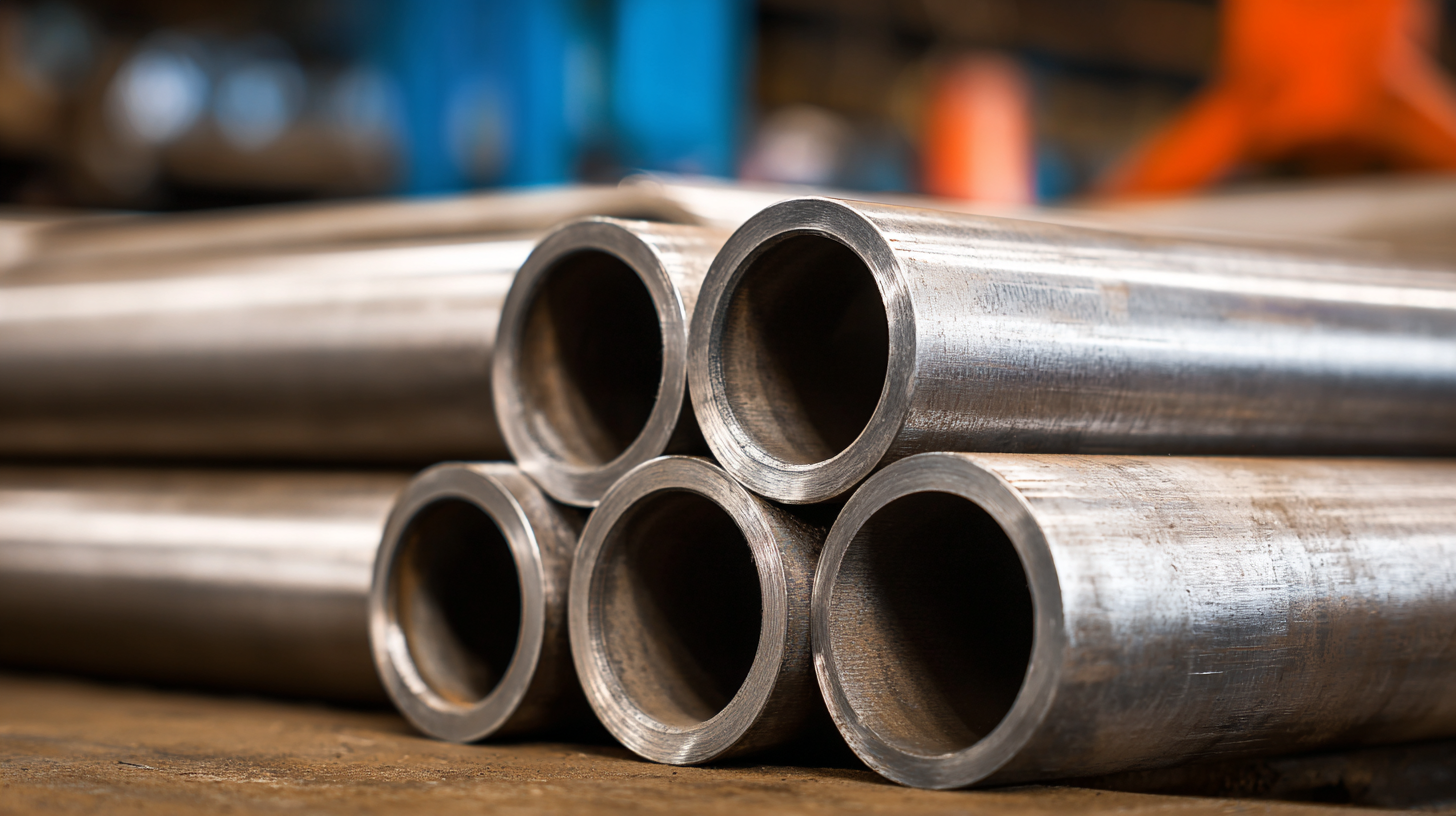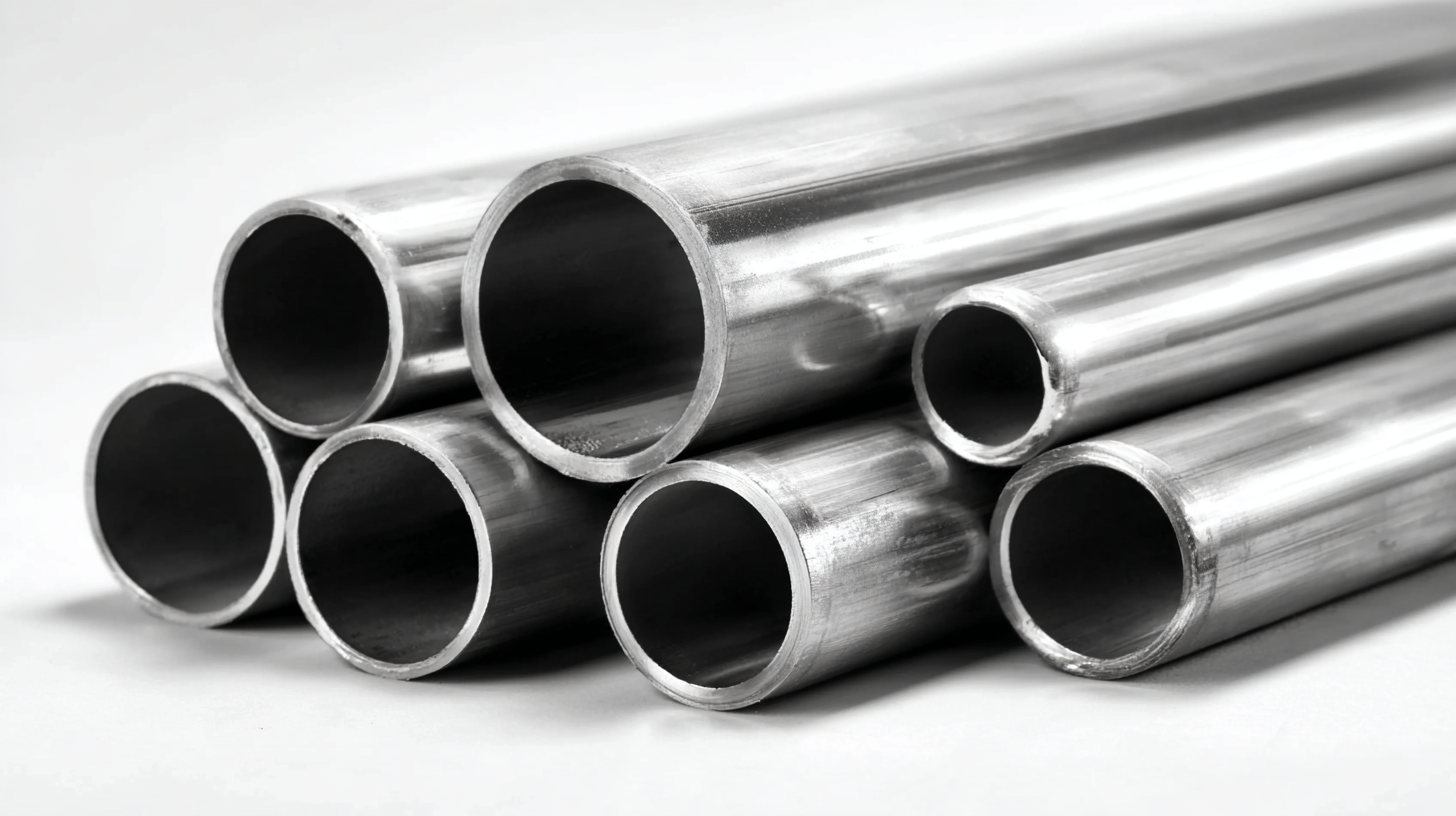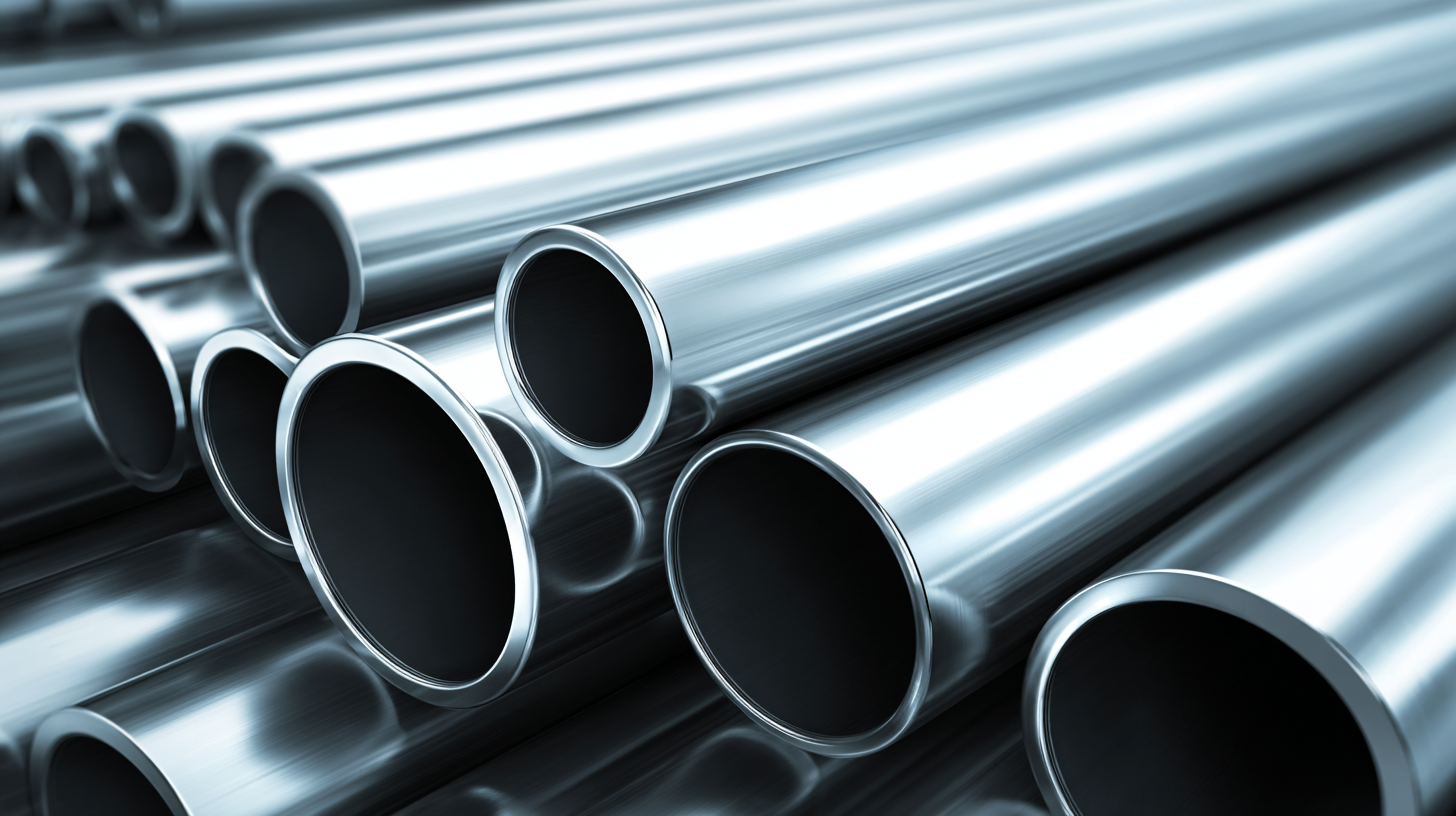 Stainless Seamless Pipes have emerged as a crucial component in various industrial applications, owing to their remarkable durability and resistance to corrosion. According to the latest report from the Global Seamless Pipe Market, the demand for stainless seamless pipes is projected to grow at a compound annual growth rate (CAGR) of 6.5% between 2021 and 2028, driven by the increasing need for high-performance materials in sectors such as oil and gas, chemical processing, and construction. Unlike welded pipes, stainless seamless pipes offer superior strength and reliability, making them ideal for high-pressure environments. Their ability to withstand extreme temperatures and harsh chemicals further enhances their appeal in industries where safety and performance are paramount. This article will explore the unique benefits of stainless seamless pipes and their applications across various fields, providing insights into why these materials are essential for modern industrial requirements.
Stainless Seamless Pipes have emerged as a crucial component in various industrial applications, owing to their remarkable durability and resistance to corrosion. According to the latest report from the Global Seamless Pipe Market, the demand for stainless seamless pipes is projected to grow at a compound annual growth rate (CAGR) of 6.5% between 2021 and 2028, driven by the increasing need for high-performance materials in sectors such as oil and gas, chemical processing, and construction. Unlike welded pipes, stainless seamless pipes offer superior strength and reliability, making them ideal for high-pressure environments. Their ability to withstand extreme temperatures and harsh chemicals further enhances their appeal in industries where safety and performance are paramount. This article will explore the unique benefits of stainless seamless pipes and their applications across various fields, providing insights into why these materials are essential for modern industrial requirements.
Stainless seamless pipes stand out from their welded counterparts primarily due to their manufacturing process and structural integrity. Unlike welded pipes, which are formed by joining two edges together, seamless pipes are created from a single piece of metal, ensuring there are no weak points or vulnerabilities at seams. This characteristic makes seamless pipes ideal for high-pressure applications, as they can withstand greater stress without the risk of failure.
Another significant advantage of stainless seamless pipes is their corrosion resistance. The lack of weld seams means there are fewer areas for rust or other forms of corrosion to develop, which is crucial in industries where chemical exposure is common. Additionally, the smooth interior surface of seamless pipes promotes better flow characteristics, reducing energy loss in fluid transport systems.
Tips: When selecting stainless seamless pipes for your industrial needs, consider factors such as the pipe grade and thickness to ensure compatibility with your application. Regular maintenance and inspections can help to extend the life of your piping systems and prevent operational failures. Lastly, consult with suppliers about the latest technology advancements in seamless pipe production to ensure you're acquiring the best products available.

Stainless seamless pipes are crucial components in the oil and gas industries due to their exceptional strength, corrosion resistance, and ability to withstand high pressures. According to a report by MarketsandMarkets, the seamless pipe market in the oil and gas sector is projected to reach $4.3 billion by 2026, driven primarily by the demand for superior piping solutions that offer longevity and reliability in harsh environments. The absence of welds in seamless pipes reduces the risk of failure, making them ideal for transporting substances like crude oil and natural gas, which can be highly corrosive.
Key applications of stainless seamless pipes include upstream exploration and production, as well as downstream refining processes. In upstream operations, these pipes are often utilized in drilling and completion phases, where high tensile strength is necessary to resist the enormous pressures encountered underground. A report by Grand View Research highlights that over 60% of the global seamless pipe demand stems from the oil and gas industry, underscoring the importance of using high-quality materials to ensure safety and efficiency in fluid transmission. Additionally, in downstream applications, seamless pipes are favored for their ability to maintain structural integrity in refining processes, contributing to overall operational safety and performance.
| Property | Description | Typical Applications |
|---|---|---|
| Material Composition | Stainless steel (such as 304, 316, 321 grades) | Oil and gas pipelines, chemical processing |
| Strength | High tensile strength and resistance to deformation | Pressure vessels, high-pressure applications |
| Corrosion Resistance | Excellent resistance to rust and oxidation | Marine environments, chemical processing plants |
| Durability | Long service life with low maintenance needs | Refineries, processing facilities |
| Seamless Design | No welds, reduces risk of leaks and failures | Critical applications in oil and gas transport |
Stainless seamless pipes have become essential in various industrial applications, particularly in environments that demand durability and resistance to high pressure. These pipes are produced without any joints, making them less prone to leaks and failures in high-pressure scenarios. This unique manufacturing process results in a thicker wall compared to welded pipes, providing superior strength and reliability. As industries like oil and gas continue to expand, the demand for stainless seamless pipes is anticipated to soar, with projections estimating the market to reach USD 5.15 billion by 2030.
The performance advantages of stainless seamless pipes extend beyond their structural integrity. They exhibit exceptional resistance to corrosion, particularly in environments where high temperature and aggressive fluids are involved. This makes them ideal for applications in the oil and gas sector, where the interplay between high pressure and corrosive substances is a significant challenge. As the cold drawn seamless steel pipes market is expected to grow at a considerable rate, the role of stainless seamless pipes in enhancing operational efficiency and safety in demanding conditions cannot be overstated.
Stainless seamless pipes are gaining considerable attention in various industrial applications due to their unique benefits, especially in terms of longevity and cost-effectiveness. As industries increasingly prioritize durability and reliability, investing in stainless seamless pipes proves to be a strategic choice. These pipes, which lack welds or joints, reduce the risk of leaks and failures, making them ideal for high-pressure environments. Their resistance to corrosion and extreme conditions further enhances their operational lifespan, contributing to significant savings on maintenance and replacement costs.

The stainless steel seamless pipe market is projected to reach USD 5.15 billion by 2030, indicating strong investment potential. Companies looking to enhance their infrastructure are drawn to these pipes not just for their performance but also for the long-term financial benefits they offer. The initial investment may be higher compared to traditional options, yet the lower lifecycle costs and reduced downtime present a compelling case for businesses in sectors such as oil, gas, and chemicals, where reliability is paramount. Thus, the strategic adoption of stainless seamless pipes aligns with industry trends focused on sustainability and efficiency.
Stainless seamless pipes have become increasingly prominent in various industrial applications, particularly due to their exceptional corrosion resistance in harsh environments. These pipes, manufactured without any welds, are less susceptible to the vulnerabilities that welded pipes face, such as pitting and crevice corrosion. This property makes them ideal for use in corrosive settings, including chemical processing and marine environments, where exposure to harmful substances is inevitable.
The unique benefits of stainless seamless pipes extend beyond their corrosion resistance; they also offer superior strength and durability. This can significantly enhance the longevity of installations in industries such as oil and gas, where equipment often faces extreme conditions. For instance, recent advancements in alloy formulations, designed for specific applications like subsea environments, further bolster this resilience against harsh external factors.
**Tip:** When selecting stainless seamless pipes for industrial use, consider the specific environmental conditions and fluid types they will be exposed to. This will ensure optimal performance and minimal maintenance over time. As the market for these materials continues to grow, investing in high-quality stainless seamless pipes can provide substantial long-term benefits.





